#louis dreamhouse
Text
Barbie Battle 5: Boys!
Before you ask who Blaine is, remember how in 2004 there were headlines that Barbie and Ken broke up? Blaine was who she dated before she got back together with Ken in 2005. He's only ever been a doll, no appearances, but Barbie doesn't have a lot of love interests, so we had to stretch things a bit
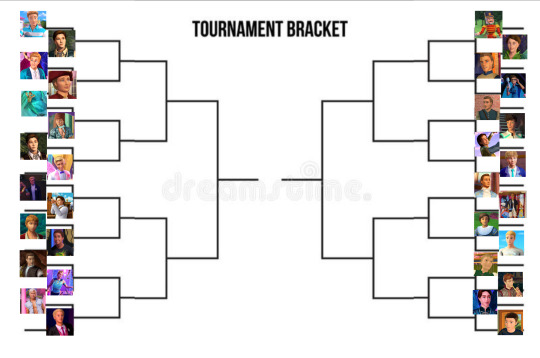
[Image: a 32 entry bracket showing the following matchups:
Life in the Dreamhouse!Ken vs Ian (Diamond Castle)
Liam (Princess and the Popstar) vs Dominick (Princess and the Pauper)
Nalu (Fairytopia) vs Toy Story!Ken
Jeremy (Diamond Castle) vs Fashion Fairytale/Fairy Secret!Ken
Wes Rivers (Princess Power) vs Antonio (Island Princess)
Hilarion (Pink Shoes) vs Marcus (Rock n Royals)
Aiden (Magic of the Pegasus) vs Delphin (Pearl Princess)
Live Action!Ken vs Nicholas (Princess Charm School)
Eric (Nutcracker) vs Linden (Fairytopia)
Stefan (Rapunzel) vs Lazlo (Spy Squad)
Daniel (Swan Lake) vs Leo (Starlight Adventure)
Louis (Three Musketeers) vs Edmund (Rock n Royals)
Julian (Princess and the Pauper) vs Blaine (doll)
Albrect (Pink Shoes) vs vloggerverse!Ken
Todd (Barbie Diaries) vs Derek (Twelve Dancing Princesses)
Carlos (Mariposa) vs Kevin (Barbie Diaries)
End.]
25 notes
·
View notes
Text
My media this week (16-22 Jul 2023)

legit obsessed with this show right now
📚 STUFF I READ 📚
😊 Hi Honey, I'm Homo!: Sitcoms, Specials, and the Queering of American Culture (Matt Baume, author & narrator) - interesting look at queer rep on sitcoms starting with Bewitched - focused on shows with substantial content so it was very white (which does reflect the TV landscape) but doesn't really address that -- I would have liked at least some mention of the lack of intersectionality tbh - but still an interesting and entertaining overview
🥰 Hurts that Time Alone Cannot Heal (E_Greer) - 44K, post WS recovery wingfic
🥰 come hell or high water (helix_stomper) - 66K, pt 3 of boots & budweiser’s miraculous misadventures - steddie D/s - after weeks of falling for each other thru anonymous glory hole sex, they finally meet and really get started
💖💖 +194K of shorter fic so shout out to these I really loved 💖💖
Ill With Want (thedoubteriswise) - MCU: pre-war stucky, 27K - incredibly well written delicious angst from Bucky's POV [reread]
the slow death of Steve Rogers [at the hands of the stupid, sexy, considerate stripper] (MaddieWritesStucky (Madeleine_Ward)) - MCU: modern no powers stucky, 5K - very hot stripper!bucky AU [reread]
📺 STUFF I WATCHED 📺
D20: Dungeons and Drag Queens - "In The Heart Of Death" (s18, e4)
D20: Adventuring Party - "The Gaming Super Bowl" (s13, e4)
Um, Actually - s8, e9
D20: A Crown of Candy - s5, e5-14
D20: Adventuring Party - s1, e5-14
🎧 PODCASTS 🎧
⭐ Vibe Check - A Special Conversation with Jenna Wortham
Wait Wait... Don't Tell Me! - Patti LuPone
Re: Dracula - July 18: Trouble Ahead
Into It - The Enduring Appeal of Barbie
⭐ How To! Plus - How To Make Aging Easier for Everyone
The Sporkful - Why Ice Is This Summer's Hottest Trend
What Next: TBD Plus - America’s Killer Car Problem
⭐ Vibe Check - All I Have Faith in Is Art, Orgasms, and Friendships
Re: Dracula - July 19: Present Craving
Rachel Maddow Presents: Déjà News - Episode 5: Taken for a Ride
Stuff The British Stole - Zero Marks The Spot
The Atlas Obscura Podcast - The Coffee Palace
The Atlas Obscura Podcast - A house move like no other
The Atlas Obscura Podcast - Darién Gap
Outward Plus - The Pleasures and Politics of Cruising
Re: Dracula - July 20: Most Difficult and Vital Aspect
Pop Culture Happy Hour - A Barbie v. Oppenheimer Game
The Atlas Obscura Podcast - Face to Face
50 MPH - 6 MPH / A Workhorse Takes the Reins
⭐ 99% Invisible #545 - Shade Redux
Dear Prudence Plus - How Do I Disclose to My Kids That I've Had an Abortion–Twice? Help!
Into It - Culture Is Back: Why We Love 'The Golden Bachelor' and Those Weird TikTok Livestreams
What Next: TBD Plus - America’s $5 Trillion Grid Problem
Hit Parade Plus - Lenny on Mars Edition
Re: Dracula - July 22: Rough Weather
ICYMI Plus - The Day AO3 Went Down
⭐ The Sporkful - Why Barbie’s First Dreamhouse Didn’t Have A Kitchen
Switched on Pop - How Louis Armstrong invented the modern pop star
50 Years of Hip-Hop - 1986: "No Sleep Till Brooklyn" by The Beastie Boys
50 Years of Hip-Hop - 1987: "Paid in Full" by Eric B. and Rakim
⭐ Decoder Ring Plus - What's Really Going On Inside a Mosh Pit?
🎶 MUSIC 🎶
Best Of '81 To '85 [Y&T] {1990}
Pop Radio • 1970s
That! Feels Good! [Jessie Ware] {2023}
Jessie Ware
Get Pumped: Rock Anthems
#sunday reading recap#bookgeekgrrl's reading habits#bookgeekgrrl's soundtracks#queer culture#fanfic ftw#d20 a crown of candy#dungeons and drag queens#dimension 20#y&t#jessie ware#decoder ring podcast#vibe check podcast#the sporkful podcast#99% invisible podcast#how to! podcast#hit parade podcast#switched on pop podcast#50 years of hip-hop podcast#into it podcast#re: dracula#wait wait... don't tell me! podcast#what next: tbd podcast#rachel maddow presents: déjà news podcast#stuff the british stole podcast#the atlas obscura podcast#outward podcast#pop culture happy hour podcast#50 mph podcast#dear prudence podcast#icymi podcast
7 notes
·
View notes
Text
My dear friend vitamin_kay is writing the incredible OITN-inspired Interview with the Vampire prison AU fic Cheerful Oblivion. It's absolutely brilliant but since it's Louis-POV, we don't get to see what Armand and Daniel get up to when Louis isn't looking.
Enter ya girl GrayGiantess.
I present: Five Rounds, an Armandaniel companion piece to Cheerful Oblivion.
CW: The below summary contains ableist language.
Five Rounds can 100% be read as a standalone piece but it'll hit much better if you also read Cheerful Oblivion (which I'd recommend to anyone anyway because it's just so good).
This fic is EXPLICIT.

A million thanks to vitamin_kay for enabling me in this project and letting me take our boys for a spin around her Barbie dreamhouse. ❤😘 This was my first foray into AU and I had an absolute blast writing this.
#fanfic#iwtv fic#interview with the vampire#iwtv#prison au#human AU#armandaniel#armand#daniel molloy#young daniel molloy#I'm new to Tumblr if I’m missing any tags or CWs please let me know
6 notes
·
View notes
Text
10 characters game!!
I was tagged by @scribeoffate thank you so much btw, but since this is a very multifandom-y post, i shall put this in my multifandom blog!
game is to list 10 characters from 10 fandoms!
I'm fairly new to fandom things so I dont know if I have enough fandoms, but I'm gonna try to pinch out 10!
Jackson Whittemore: Teen Wolf
The apple of my eye, Beacon Hills' resident asshole. i love him so much.
Jack Twist: Brokeback Mountain
Never going to acknowledge the last 20~ minutes of the film. Most of my feelings toward him is usually envy because I wanna be a naive cowboy in love with a emotionally constipated at times but still very loving cowboy
Stanley: The Umbrella Academy
he took the latest season by storm for me. Man I do love a snarky little mischievous kid who's first thought of getting rid of a body is to dissolve it.
Merlin: Merlin
Ah, yes, the titular character from a show that's named after said titular character. Can't go wrong favouriting that. But I do love Merlin and his magic and witty lines and his cute-ass smile and his character arc and his little scarf and his love for his friends, his king, his family, his mentor, and his undying loyalty and his
Legoshi: Beastars
God this wolf guy, he's just so <3<3<3. Wish him nothing but good things and definitely some down time and relaxation with Haru and Louis.
Neo AND Trinity (do not make me choose): The Matrix
Simulation Superman (re: his flying) ilysm, Girlboss with guns and a badass motorcycle i also lysm. I am so Bi for them.
Princess Carolyn: Bojack Horseman
Love this show and the way that it handled its characters, gotta love PC and her arc though. I find her arc to be something so powerful and I love how she found happiness in the end and just, omg, her <3.
Ryan: Barbie Life In The Dreamhouse
This show is literally the best thing ever. Ryan and his cardboard cutouts and rivalry with Ken and his fear of dolphins is one of the best things about this show. If I could, I would've picked the show as a whole because I love the characters in it and everything about the show is perfect.
Gulliver: The Humans (written by Matt Haig)
idk if this qualifies as a fandom since this is a book and i have yet to make any fandom strides towards this book other than t h i n k about it deeply. I love this book to bits, and gulliver has a special place in my heart. I srsly want to write fanfic about him and christopher post ending because i want more happy fluffy feels like the book was aiming for towards the end. i really have quite a few other ficcy ideas surrounding gulliver and the plot of the book because yes why not.
Tin Tin: The Adventures of Tintin
Tin Tin is one versatile guy, he knows everything from shooting a gun to befriending gorillas. He deserves a spot on this list since my bday cake back in february was Tin Tin themed.
Tagging with curiosity: @rhyslahey @jovialsandwichsoul @scintalla and @sequinedmonkey
if the url isnt as connect the two dots as it is, it is i, @domesticated-feral
4 notes
·
View notes
Text
Breaking Barbie: Interrogating Gender, Power, and Capitalism Through Critical Analysis

Introduction
Barbie (2023) broke the internet and the box office this past Summer when it was finally released in theaters to the delight of moviegoers worldwide. Its feminist message, regardless of how capitalistic and surface-level, resonated with many viewers and shook the film industry through its comical and easily approachable narrative for all age groups. With its many social commentaries, this film is ripe for analysis through the lens of various theorists whom we have discussed and read about in class. For my analysis, I will be applying the theories of Althusser, Horkheimer & Adorno, Saussure, and Deleuze to both the diegesis and real-world implications of Barbie (2023). In scenes like Barbie’s Dreamhouse party scene, Barbie (2023) touches upon what happens when you no longer fit in the status quo. Using Saussure and Deleuze’s theories to analyze symbols, signs, and elements of repetition, we can apply Althusser and Horkheimer & Adorno’s Marxist theories of the state apparatus and culture industry to the film’s themes. While seemingly attempting to break free from these oppressive structures, Barbie (2023) continues to uphold and even perpetuate the culture industry and consequently the state apparatuses that uphold it. I will first explore the similarities and differences between the aforementioned theorists’ works regarding critiques of power and ruling ideologies before delving into a scene from Barbie (2023).
Section 1: Critiques of Ideology and Power from Althusser, Horkheimer & Adorno, Saussure, and Deleuze
The works of Louis Althusser, Max Horkheimer, Theodor Adorno, Ferdinand de Saussure, and Gilles Deleuze represent significant contributions to various fields such as philosophy, sociology, linguistics, and cultural studies. While each of these theorists approaches their respective topics from different angles and employs distinct methodologies, there are commonalities in their ideas and concepts that underscore broader themes of power, ideology, language, and culture. One overarching commonality among these theorists is their critical stance toward dominant structures and systems in society. Whether it be Althusser's critique of ideological state apparatuses, (1) Horkheimer and Adorno's analysis of the culture industry, Saussure's examination of language as a system of signs, or Deleuze's exploration of repetition and difference, all these thinkers are concerned with uncovering and interrogating the mechanisms through which power operates and shapes our understanding of the world, including application to visual texts.
Central to Althusser's theory of ideology is the notion that ideology functions through institutions and practices that reproduce and reinforce existing power relations and repression (2). He argues that ideologies are not merely sets of ideas but are material practices that interpolate individuals as subjects within a given social order (3). This idea resonates with Horkheimer and Adorno's critique of the culture industry, wherein they contend that mass culture, far from being a realm of genuine expression and creativity, is instead a tool of manipulation and control, serving the interests of capital and perpetuating conformity (4).
Saussure's structuralist approach to language similarly reveals how systems of signs and signifiers shape our understanding of reality. His distinction between langue (the abstract system of language) and parole (individual speech acts) emphasizes the social and symbolic nature of language, highlighting how meanings are not inherent in words but are rather constructed through social conventions and relations. This insight into the arbitrary nature of linguistic signs resonates with the broader theme of the constructed-ness of reality and the role of discourse in shaping our understanding of the world. Deleuze's concept of repetition and difference offers a unique perspective on how identity and meaning are produced through processes of repetition and variation. For Deleuze, repetition is not simply the replication of the same but involves difference and variation, leading to the emergence of new forms and possibilities (6). This idea presents a new perspective of critical analysis from which to view parody and pastiche.
Moreover, all these theorists share a commitment to critical inquiry and a rejection of essentialist and deterministic views of society and culture. Instead, they emphasize the importance of understanding the contingent and historical nature of social phenomena, as well as the potential for resistance and transformation. They also all critique capitalism (or provide new tools to critique it) in one way or another. In conclusion, while Louis Althusser, Max Horkheimer, Theodor Adorno, Ferdinand de Saussure, and Gilles Deleuze approach their respective topics from different angles and disciplines, their works converge around key themes such as power, ideology, language, and culture. Through their critical analyses, they challenge us to question the dominant structures and systems that shape our lives and to envision alternative ways of understanding and organizing society.
Section 2: Difference in Influence, Approach, and Methodology
While theorists Louis Althusser, Max Horkheimer, Theodor Adorno, Ferdinand de Saussure, and Gilles Deleuze share common critiques about power, ideology, language, and culture, their approaches and methodologies also exhibit notable differences. These distinctions arise from their varying intellectual backgrounds and overall theoretical frameworks. Firstly, Althusser's structural Marxist approach focuses on the role of ideology and its interplay with state apparatuses in maintaining the dominance of the ruling class. His emphasis on the effects of the state apparatus on individuals reflects his commitment to understanding social reproduction through the lens of Marxist theory. Althusser highlights that “[i]deology represents the imaginary relationship of individuals to their real conditions of existence,” (7) in his thesis. In contrast, Horkheimer and Adorno adopt a critical theory perspective that incorporates elements of Marxist analysis with insights from sociology and cultural critique. Their work on the culture industry explores how mass media and cultural production serve to perpetuate conformity and alienation in capitalist societies, emphasizing the role of culture in shaping collective consciousness rather than in the individual (8).
Saussure's structural linguistics diverges slightly from these sociopolitical concerns, focusing instead on the structure and function of language as a system of signs (which can, of course, be applied sociopolitically). His focus is on the synchronic analysis of language, as opposed to historical or diachronic approaches. While Horkheimer & Adorno address the ideological dimensions of language, Saussure's work provides a more formal and abstract framework for understanding linguistic systems and the influences they may have on encoded and decoded messages. He does so by distinguishing the symbol from the sign and discussing arbitrary linguistic connections in a way that can be applied to various visual texts (9). Deleuze, on the other hand, offers a departure from both Marxist and structuralist perspectives with his concept of difference and repetition. Deleuze's philosophy challenges traditional notions of identity and subjectivity, particularly exploring the novel elements of repetition compared to difference. In comparison to Saussure’s focus on language, Deleuze explores repetition as a concept applicable to philosophy and art.
Furthermore, these theorists differ in their methodological approaches and styles of writing. Althusser's work tends to be more systematic and rigorous, drawing heavily on Marxist theory and psychoanalysis, while Horkheimer and Adorno's writing is characterized by its interdisciplinary scope. Saussure's Course in General Linguistics presents a structured exposition of his ideas, rooted in the analysis of language as a system, whereas Deleuze's writing is often more abstract and poetic, engaging with concepts through creative and unconventional means while regularly drawing upon his influences. Overall, while Louis Althusser, Max Horkheimer, Theodor Adorno, Ferdinand de Saussure, and Gilles Deleuze share common themes and concerns in their respective works, their differences in approach, methodology, and intellectual backgrounds affect their theoretical analysis and the ways in which we can apply them to visual texts.
Section 3: Barbie as a Microcosm and Perpetuant of the Culture Industry
youtube
An iconic, standout scene from the Barbie film is one toward the beginning, where Stereotypical Barbie hosts a blowout party at her Dreamhouse with all of her friends. This scene, when closely analyzed, is a perfect perpetuant of the culture industry, particularly related to the film and the music and memorabilia made in the film’s image. Directly following a scene where Ken asks Barbie if he can come over (to which she replies that she’s doing nothing much, just hosting a big party), this party scene hosts a colorful set and array of costumes with visually pleasing lighting and choreography.
The focus of the camera shifts with the choreography as each of the Barbies are highlighted while Dua Lipa’s original song plays diegetically. Characters are dressed in mostly gold, silver, and white shining dresses, bodysuits, and tracksuits, and the diversity of the Barbies is highlighted as they dance; though some characters (such as Midge and Alan) are cut to for comedic effect. The lighting is blue and purple and the hot pink set-pieces pop against the shimmering background. It is truly theatrical and stunning to visually take in. Stereotypical Barbie dances with a Ken aside from her own Stereotypical Ken, leading to a humorous dance and challenge between the two Kens.
As she dances with the other Barbies, Stereotypical Barbie begins to talk with her friends about how this is the best night ever, and so is yesterday and tomorrow and every day in Barbieland, before she asks if “you guys ever think about dying?”, prompting the music to cut and everyone to stop dancing and look at Barbie in disgust and confusion. Stereotypical Barbie then stands and smiles awkwardly before brushing off her statement and covering it up, saying that she is “just dying to dance!”, allowing the music to continue to play and everyone to keep dancing. This moment highlights the shift in the narrative that changes Barbie’s journey and purpose in the story; she no longer fits the status quo of Barbieland. This is, however, not due to her outward appearance like it is for Alan or Midge, but instead because of her internal thoughts.
Louis Althusser's concept of ideology and ideological state apparatuses provides a lens through which to understand the cultural significance of Barbie as a symbol of idealized femininity. The blowout party at Barbie's Dreamhouse can be seen as a manifestation of the ideological apparatuses at work, perpetuating normative gender roles and consumerist values. Barbie, as the quintessential embodiment of femininity, hosts a glamorous event that reinforces notions of beauty, wealth, and social status, all of which are central to the ideology of consumer capitalism. Further than this, the notions of femininity pushed in Barbie seem to be shifting with the times. Barbieland’s society is a matriarchy, composed of strong, ‘girlboss’ symbols of femininity that play important roles in the Barbieland job market and are dominant in their romantic relationships. Considering the new wave of feminism composed of many working women, this scene highlights the concept of a strong working woman and introduces more standards and goals to obtain as a woman in modern society.
Max Horkheimer and Theodor Adorno's critique of the culture industry sheds light on the commodification of Barbie and the spectacle of the party scene. The elaborate costumes, choreography, and Dua Lipa's original song contribute to the immersive experience designed to captivate and entertain audiences. However, beneath the surface glamour lies a manufactured reality, carefully constructed to sell merchandise and perpetuate the Barbie brand. The scene's emphasis on visual spectacle and consumerist excess reflects the logic of the culture industry, where entertainment serves as a means of social control and distraction. Considering the feminist themes of the film, this scene may push a sense of false consciousness in the context of the film as a whole, giving the viewer a magical escape from the real world. Moreover, the scene's emphasis on visual spectacle and consumerist excess reflects the culture industry's tendency to reduce complex human experiences to easily consumable commodities. Barbie herself becomes a symbol of this commodification, her image meticulously crafted and marketed to embody an unattainable ideal of femininity.
Ferdinand de Saussure's post-structuralist approach to language offers insights into the symbolic significance of Barbie's dialogue during the party scene. When Barbie abruptly interrupts the festivities with her existential question about death, the reaction of her friends underscores the power of language to disrupt social norms and challenge ideological conformity. Barbie's deviation from the script of superficial pleasantries exposes the fragility of the ideological facade, revealing the existential angst lurking beneath the surface of Barbie's perfect world.
Gilles Deleuze's concept of repetition and difference highlights the main characters of Barbie and illuminates Barbie's moment of introspection and its implications for her journey as a character. Throughout much of the choreography, background dancers repeat dance moves and move as a unit to highlight the difference in movement of the important characters. As well as this, by questioning the meaning of life amidst the spectacle of the party, Barbie disrupts the repetitive cycle of life in Barbieland and opens herself up to new possibilities of self-discovery and transformation, leading to the rest of the film. Her awkward attempt to reconcile her existential musings with the frivolity of the party underscores the tension between authenticity and artifice, signaling a departure from the status quo of Barbieland and the beginning of a journey toward self-realization.
Conclusion
The works broken down in this synthesis give a basis for analytical reasoning to deconstruct the many layers of Barbie’s encoded messages. From the glittery costumes to the catchy tunes, Barbie successfully draws upon feminist ideals and pushes a conformist style of femininity onto viewers that is relevant to current events to, at the end of the day, make a profit with merchandise at the box office. Scenes like the dream-house party scene serve as easily consumable, fun visual spectacles to placate the viewer in line with the culture industry cycle. However, beneath the glossy, plastic surface of Barbie's world lies a deeper commentary on contemporary culture, where ideals of beauty and success are molded and manufactured for mass consumption. In interrogating the cultural significance of Barbie through the lens of Althusser, Horkheimer & Adorno, Saussure, and Deleuze, we are prompted to question not only the messages encoded within her image but also the broader societal norms and values that shape our collective imagination.
(1) Althusser, 92.
(2) Althusser, 93-94.
(3) Althusser, 88.
(4) Adorno & Horkheimer, 119.
(5) Saussure, 9-13.
(6) Deleuze, 13-14.
(7) Althusser, 100.
(8) Adorno & Horkheimer, 122.
(9) Saussure, 67-68.
0 notes
Text
ルイ・ヴィトンの新作バッグ&財布は、もはやアートピースだ!──特集:「バッグと財布」
2022年、ルイ・ヴィトン秋冬メンズ・コレクションがはじまった。「Louis Dreamhouse™」と題し、ヴァージル・アブローが生前に手掛けた最後のコレクションとなる。「子どもの純粋な目で世界を見る」という幻想的な世界観が色濃く反映され、バッグやアクセサリーにもその傾向が強く現れた。シュールレアリスムが反映された歪んだモノグラムモチーフのバッグや、https://www.forkopi.com/ ブランド コピー シースルーのダミエなど、まるで夢の中にいるかのようなデザインが並ぶ。今季を象徴するアイテムをピックアップした。
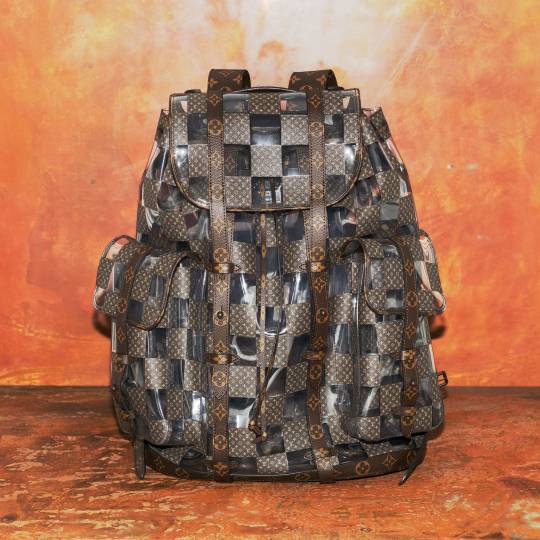
CHRISTOPHER BACKPACK
モノグラム・キャンバスと透明なPVCを用い、大胆なダミエ・パターンを生み出した。ベースは「クリストファー」だが、一見しただけでは判別できないサイバーなルックスが魅力だ。大きさはW38×H44×D21cm。メインコンパートメント内にはフラットポケットがひとつある。
MINI SOFT TRUNK
「ミニ・ソフトトランク」を、“パフ感のあるダミエ”をテーマにアップデート。ふっくらとしたカーフの質感は、リッチな雰囲気満載。トーン・オン・トーンのメタルパーツが全体を引き締めている。サイズはW18.5×H13×D8cmで、財布やスマホなど身の回りのものを入れるのにちょうどいい。
ZIPPY WALLET VERTICAL
「ジッピーウォレット・ヴェルティカル」は、クライミングホールドに着想を得た装飾がポイント。チョークホワイトのカラーリングも、ありそうでなかった色合いだ。サイズはW10×H20×D2cmで、札入れ1、フリーポケット2、カードスリット12、カードポケット2と大容量なのも使い勝手がいい。

FLOWER BOUQUET
ルイ・ヴィトンは、コーヒーカップやペンキカンなど、これまでのバッグの常識を塗り替えるクリエイティブを展開してきた。今季は、花束をモチーフにしたバッグが登場。サイズもW27×H48×13cmと、街角のフラワーショップで売られていそう��大きさ。モノグラムを包み紙に見立て、レザーやキャンバスで花をかたどった。小さいながらも、スマホやちょっとした小物が入るジッパーポケットがある。
ORGANIZER DU POSH
子どもの純粋な目で世界を見る、というコレクションのテーマに沿ったクライミングホールドのデザインに注目。形状は2つ折り財布で、外ポケット1、内ポケットが5、そしてカードポケットが3つある。サイズはW8×H11×D1cmだ。内側の鮮やかなブルーのコントラストが美しい。
ORGANIZER DU POSH
定番アイテムであるオーガナイザー・ドゥ ポッシュを、https://www.forkopi.com/b-louisvuitton.html LOUIS VUITTON スーパーコピー ファンタジックに解釈。波のようなうねりのあるフォルムと、ぼやけたモノグラム・パターンが幻想的な世界へといざなう。大きさはW8×H11×D1cm。カードポケット3、外フラットポケット1、スリットポケットが5つあり、収容能力も申し分なし。
0 notes
Photo
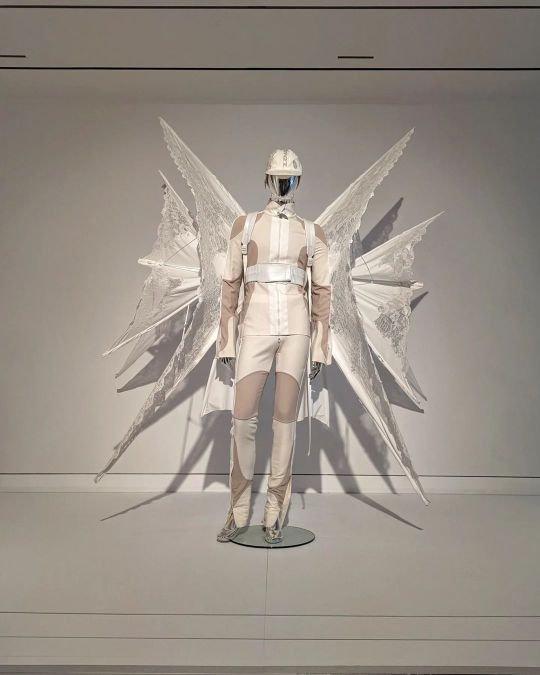
Virgil Abloh™ “Figures of Speech.” Brooklyn Museum, 2022 . . . . 1. From Look 68, Louis Vuitton c/o Virgil Abloh™ Men's Fall-Winter 2022 Collection ("Louis Dreamhouse"), 2022 2. From Look 34 (Abdul), Louis Vuitton c/o Virgil Abloh™ Men's Spring-Summer 2022 Collection ("AMEN BREAK"), 2021 3. "PSA", 2019 4. SOCIAL SCULPTURE 5. SOCIAL SCULPTURE . . . . #art #virgilabloh #brooklyn #bkmuseum #brooklynmuseum #justgoshoot #nycphotography #nyclife #newyork_ig #what_i_saw_in_nyc #googlepixel #teampixel (at Brooklyn Museum) https://www.instagram.com/p/CjRwo48O7UB/?igshid=NGJjMDIxMWI=
#art#virgilabloh#brooklyn#bkmuseum#brooklynmuseum#justgoshoot#nycphotography#nyclife#newyork_ig#what_i_saw_in_nyc#googlepixel#teampixel
1 note
·
View note
Text





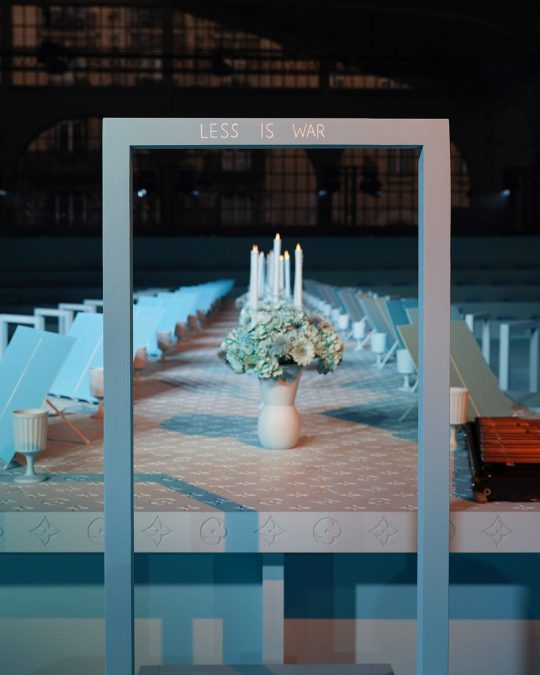

Louis Vuitton AW 22 menswear collection set design titled "Louis Dreamhouse", at the Carreau du Temple in Paris. Designed by Playlab Inc.
Inspired by Virgil's childhood home and the Truman show.
Virgil's last show :(
1 note
·
View note
Text
Campanha Louis Vuitton Geração 'V'
Campanha Louis Vuitton Geração ‘V’
Apresentada pela primeira vez na 𝓛𝓸𝓾𝓲𝓼 Dreamhouse™️, a coleção masculina Outono/Inverno 2022 consolida os temas e mensagens das oito coleções que Virgil Abloh criou para a Louis Vuitton . A campanha Generation ‘V’, fotografada por Tyrone Lebon, reúne alguns dos parceiros colaboradores de Virgil Abloh – a cantora e produtora Solange Knowles, o rapper e ator Yasiin Bey, o designer e DJ Nigo, o…

View On WordPress
0 notes
Text
Louis Vuitton lần thứ hai ra mắt bộ sưu tập cuối cùng của Virgil Abloh
Như một lời ca ngợi cho huyền thoại Virgil Abloh, Louis Vuitton quyết định giới thiệu bộ sưu tập cuối cùng của Virgil Abloh cho mùa Thu/Đông 2022 lần thứ hai ở Bangkok.
Trước đó bộ sưu tập đã được ra mắt ở Paris, buổi trình diễn spin-off ở Bangkok tiết lộ 9 kiểu dáng hoàn toàn mới không được ra mắt tại Paris.
Tương tự như show diễn đầu tiên, chương trình được hình thành trong một ngôi nhà Louis Dreamhouse, một quả cầu siêu thực và giống như ảo tưởng, nơi ngôi nhà được xây dựng lộn ngược, với các dụng cụ treo lơ lửng trên trần nhà, lơ lửng quanh hành tinh và một mặt trời khổng lồ quay quanh.

Bộ sưu tập mơ mộng và thanh tao song hành với tinh thần vui tươi của bộ sưu tập. Các người mẫu được nhìn thấy đi qua các đoạn đường tròn, tạo ra ảo giác về sự tuần hoàn. Show diễn này bao gồm nhiều khía cạnh của các tài liệu tham khảo mang tính biểu tượng của Abloh, từ các nhân vật hoạt hình đến âm nhạc lấy cảm hứng từ niềm đam mê tuổi trẻ của Abloh.
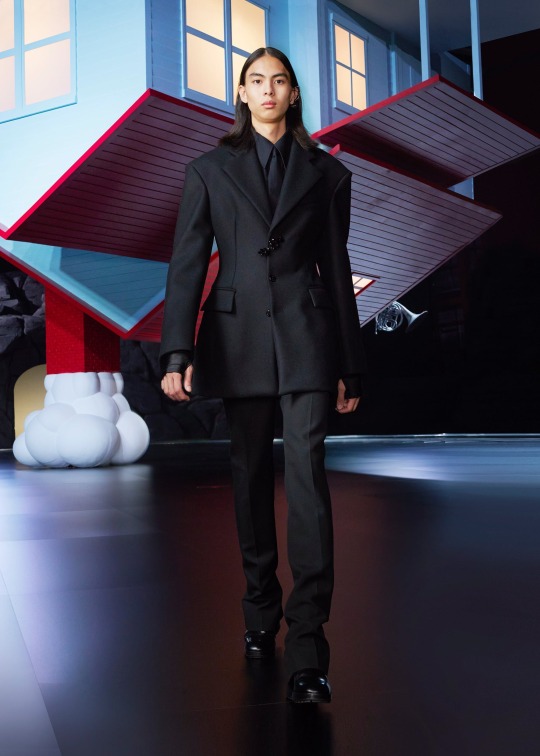
Bộ sưu tập này đánh dấu lần thứ tám và cuối cùng của Men’s Artistic Director. Đi kèm với show diễn là một đoạn phim dạo đầu — I Dream of You, như một lời tri ân cho Abloh’s Boyhood Ideology: nhìn thế giới bằng đôi mắt hoang sơ của một đứa trẻ.
Tư tưởng cốt lõi này được thể hiện qua lăng kính của đạo diễn Sivaroj Kongsakul, nơi câu chuyện kể về trải nghiệm hình thành của một cậu bé 11 tuổi trong khung cảnh nông thôn Thái Lan, một ký ức thời thơ ấu của nhà làm phim. Về cơ bản, ý tưởng thời thơ ấu bắt nguồn sâu xa từ chủ đề trí tưởng tượng thời thơ ấu của bộ sưu tập, phá vỡ các bức tường của quy tắc ăn mặc gắn liền với các nguyên mẫu xã hội.

Trong một bản ghi âm từ năm 2019 được phát trước chương trình, Abloh nói, "Chúng tôi có thể đến Ấn Độ hoặc Kansas hoặc Cuba, nhưng bất cứ nơi nào chúng tôi đến, trọng tâm là tuổi trẻ: giai đoạn trong cuộc đời bạn trước khi bạn được dạy hoặc lập trình để làm, hãy suy nghĩ hoặc mặc những thứ nhất định. Và trong nghiên cứu đó, bạn nhận ra rằng thanh thiếu niên ở hai phía đối lập của thế giới đang đối mặt với những điều tương tự. Nó phản ánh thực tế rằng, về cơ bản, tất cả chúng ta là một".

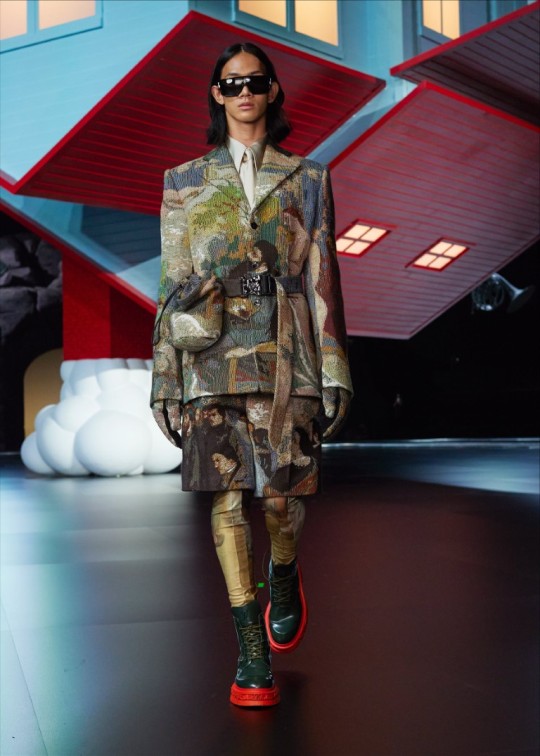


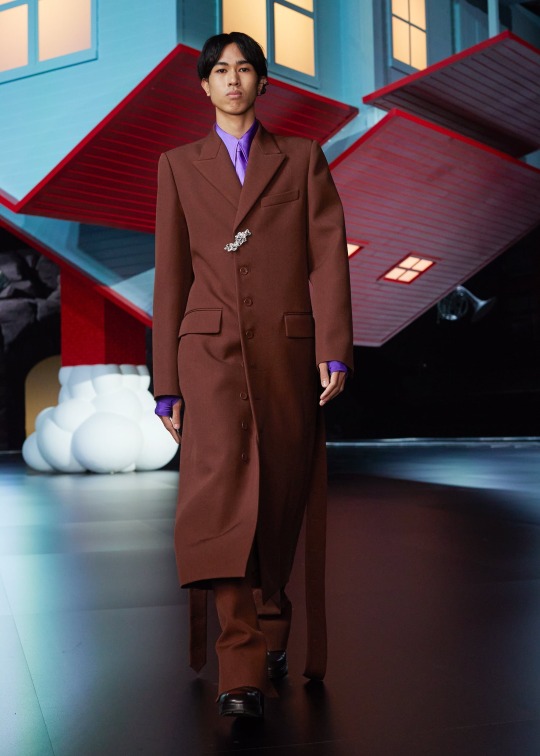


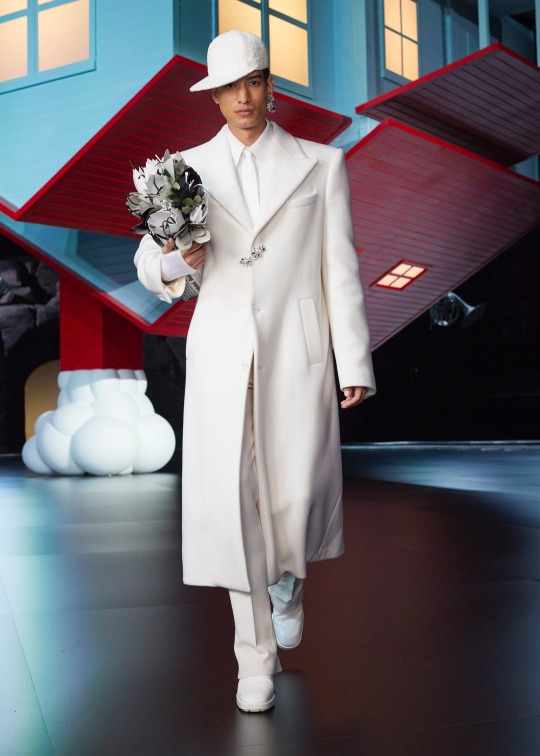

from Xu hướng thời trang 2022 https://ift.tt/DjNLTlh
0 notes
Photo
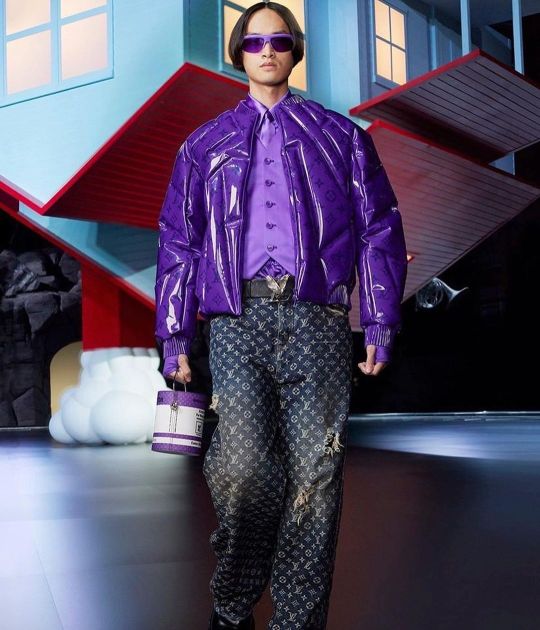
With a second runway show in Bangkok, Thailand, @louisvuitton has shown its Menswear Fall/Winter 2022 collection. The decision to exhibit the collection in a second location was made in commemoration of Virgil Abloh's legacy, and is based on Abloh's concentration on circularity. The offering, like the first, was staged in a Louis Dreamhouse, which aptly depicts the enchantment that dwells within boyhood. The collection represents Abloh's eighth and last arc at Louis Vuitton. The Bangkok presentation included nine previously unseen looks in addition to the beautiful ensembles that have already made their debut. To see all of the looks, click the link in my bio. https://www.instagram.com/p/CeXDPvSKdlh/?igshid=NGJjMDIxMWI=
0 notes
Text
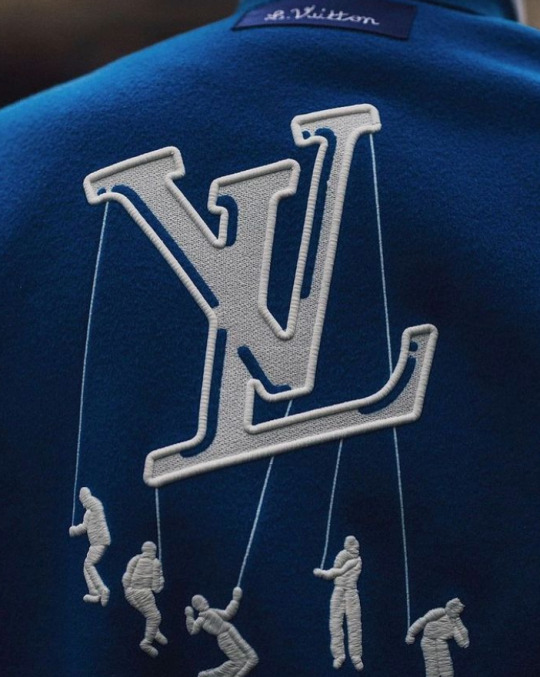
louis vuitton fall 2022 menswear
#fashion#vogue#vogue runway#poisonedsequin#fashion's equipoise#glamour#fashion details#louis vuitton fall 2022 menswear#lv#virgil#virgil abloh#bag#paint bucket#street style#runway#paris#lvmh#louis dreamhouse#suit#luxury#dream#high fashion#menswear#mens style#art#design#style#fall 2022#fw22#blue
2K notes
·
View notes
Photo



LOUIS DREAMHOUSE
LOUIS VUITTON FALL 2022 MW
—VIRGIL ABLOH’S FINAL COLLECTION
#RIP#u#fashion#louis vuitton#virgil abloh#louis dreamhouse#fall 2022#menswear#paris#runway#surreal#ethereal
487 notes
·
View notes
Text
s2 episode 9 - barbie & one direction
In this episode, Megan reads about Barbie and Ken’s escapades with G.I. Joe. Emily reads about the times she was kidnapped by and sold to One Direction (as well as Harry Styles’s secret murder plans).
listen to this comedy fanfiction podcast here!
#one direction#harry styles#niall horan#louis tomlinson#zayn malik#liam payne#larry stylinson#one direction imagines#barbie#ken#g.i. joe#barbie life in the dreamhouse#larry#icarly#monster inc#wattpad#ao3#1d#fanfic#fanfiction#podcast#archive of our own
2 notes
·
View notes
Text
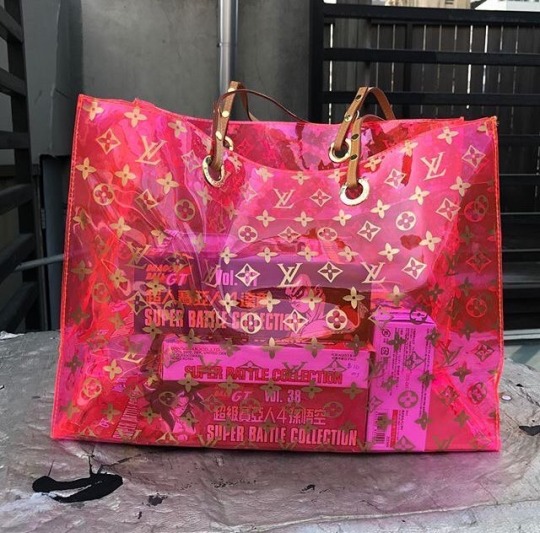
ɲɨȼ๏ℓ€ţţ€1213 - ʍ¥ βąяβɨ€ ℓɨƒ€$ţ¥ℓ€
#mybarbielifestyle#hot pink#nicolette1213#barbielifestyle#gorgeous#barbie#pink#barbie life in the dreamhouse#louis vuitton#pink louis vuitton#pink louis
19 notes
·
View notes
Text
Alex Pietrangelo: I sensed tensions and came as soon as I could!
3 notes
·
View notes